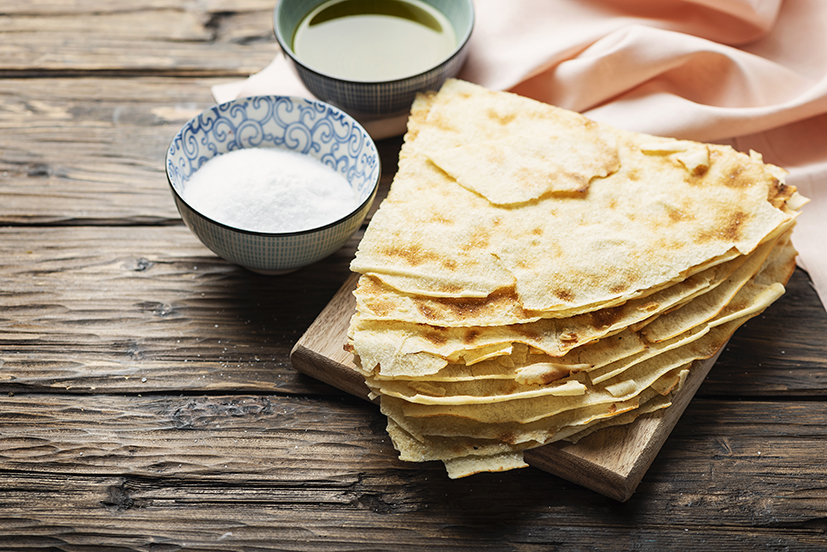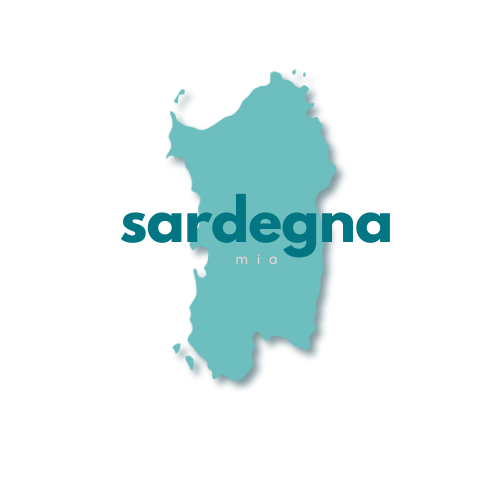FAQ's Table of Content
- About the website and us
- Planning your trip
- Attractions and activities
- Food, wine & shopping
- Authentic experiences

About the website and us
Who are you?
Hi, I’m Oxana, the founder of MiaSardegna.eu! I lived in Sardinia for several years and completely fell in love with the island. That passion led me to create a website where I could share the beauty and authenticity of Sardinia with travelers from around the world. My personal experience, combined with deep local knowledge and traditions, allows me to offer advice that goes far beyond standard travel guides.
What is MiaSardegna.eu about?
MiaSardegna.eu is a platform dedicated to discovering the authentic side of Sardinia. The site offers detailed guides to towns, beaches, cultural and archaeological sites, with special focus on food traditions and off-the-beaten-path experiences. Our goal is to provide accurate information and practical advice to help visitors experience the true essence of Sardinia, while respecting its environment and culture.
Can I contact you for personalized advice or collaborations?
Absolutely! We’re always open to personalized travel requests and collaboration opportunities. You can reach us through the contact form on the website or directly at
I’m a local business, restaurant or hotel – can I propose a collaboration?
We are interested in working with local businesses that share our values of authenticity, sustainability, and quality. If you’re a tourism board, accommodation provider, restaurant, or a producer of traditional Sardinian products, contact us at
I’m a traveler – can I get a private consultation?
We offer personalized consultations to help you plan your ideal trip to Sardinia. Whether you're looking for a custom itinerary, hidden beaches, or tips for food and wine experiences, we can tailor a plan to suit your needs. Contact us at
When will the itinerary PDFs be available?
We’re currently working on downloadable PDFs with detailed itineraries for different parts of Sardinia. The first ones will be available by June 2025, just in time for summer. Subscribe to our newsletter to be the first to know when they're released and to receive exclusive content.
Is my personal data safe?
Your privacy is important to us. All personal data collected through the website is handled in accordance with the GDPR and privacy regulations. We use encryption systems to protect sensitive information and never share your data with third parties without your explicit consent. You can read our Privacy Policy for more information.
How often do you publish new articles?
We usually publish new content twice a week, with more frequent updates during the tourist season (April–October). Articles are regularly updated to ensure accurate and relevant information. Follow us on social media or sign up for our newsletter to stay up to date.

Planning your trip
What is the best time to visit Sardinia?
Sardinia offers different experiences depending on the season.
Summer (June–September) is ideal for the sea and beaches, with temperatures ranging from 25–35°C (77–95°F).
Spring (April–May) and autumn (September–October) offer mild weather (18–25°C / 64–77°F), blooming or colorful landscapes, and more affordable prices.
Winter is quiet and authentic, perfect for exploring the inland areas and local traditions.
How can I get to Sardinia?
Sardinia can be reached by plane through the airports of Cagliari, Olbia, and Alghero, all connected with direct flights from major Italian and European cities. Alternatively, you can arrive by ferry from the ports of Genoa, Livorno, Civitavecchia, Naples, or Palermo to Cagliari, Olbia, Porto Torres, Arbatax, or Golfo Aranci.
Do I need to rent a car in Sardinia?
Renting a car is highly recommended to explore the island at its best, especially if you want to visit remote beaches, inland villages, or archaeological sites. Some areas are reachable by public transport, but connections are limited, particularly off-season. In summer, it’s essential to book your rental car well in advance.
Is Sardinia an expensive destination?
Costs vary significantly depending on the season. High season (July–August) is the most expensive, especially in tourist hotspots like the Costa Smeralda. Spring and autumn offer great value for money. By staying in agriturismi, B&Bs, or holiday apartments, dining at local trattorias, and visiting outside of peak months, you can enjoy Sardinia on a budget.
Which are the best areas to stay in, depending on my needs?
For nightlife and amenities: Costa Smeralda, Alghero, Cagliari
For families: Villasimius, Chia, San Teodoro, Alghero, Orosei
For unspoiled nature: Ogliastra, Costa Verde, Asinara
For culture and history: Cagliari, Alghero, Oristano, Bosa
For water sports: Porto Pollo (windsurfing), Capo Mannu (surfing), Villasimius (diving)
Can I visit Sardinia using public transportation?
It’s possible, but with some limitations. The main cities are connected by ARST buses and trains (main route: Cagliari–Sassari–Olbia), but schedules are limited, especially outside the summer months. Reaching remote beaches or inland villages can be difficult. For a complete experience, especially if you have limited time, renting a car remains the best option.
Attractions and activities
What are the most beautiful beaches in Sardinia?
Sardinia boasts some of the most stunning beaches in the Mediterranean. Among the most famous are: La Pelosa in Stintino, Cala Mariolu and Cala Goloritzé in Ogliastra, Chia Beach in the south, Costa Rei near Cagliari, and the beaches of Villasimius. In the north, don’t miss the beaches of the Maddalena Archipelago, as well as those in Alghero and along the Costa Smeralda.
What does Sardinia offer besides beaches?
Sardinia is rich in attractions beyond the sea: Nuragic sites such as Su Nuraxi in Barumini (UNESCO), historic cities like Cagliari, Alghero, and Bosa, natural parks like Asinara and Gennargentu, and spectacular caves such as Neptune’s Grotto and the Bue Marino caves. The island also offers opportunities for trekking, rock climbing, mountain biking, and discovering traditional festivals and local crafts.
What traditional events and festivals can you see in Sardinia?
Iconic festivals include: Sant’Efisio in Cagliari (May 1st), the carnivals of Mamoiada, Oristano, and Tempio, the Sartiglia in Oristano (Carnival), the Cavalcata Sarda in Sassari (May), and numerous summer festivals (sagre) dedicated to local products. Many villages also celebrate patron saint festivals with processions, traditional costumes, and live music.
Is Sardinia suitable for a holiday with children?
Absolutely. Many beaches have shallow, sandy waters ideal for kids (e.g., La Pelosa, Poetto, Mari Pintau, Chia). Numerous hotels and resorts offer family-friendly services. Beyond the beach, children will enjoy water parks, boat trips, visits to nuraghi and nature parks, and activities such as inflatable boat excursions to Asinara or rides on the Trenino Verde (Green Train).
What day trips are recommended from my location?
From Cagliari: Villasimius/Costa Rei, Chia, Su Nuraxi in Barumini, Is Zuddas Caves
From Alghero: Stintino/Asinara, Bosa, Neptune’s Grotto, Castelsardo
From Olbia: Maddalena Archipelago, Costa Smeralda, San Teodoro, Tavolara
From Oristano: Sinis Peninsula, Tharros, Bosa, Santu Lussurgiu
Are there guided tours or organized experiences to better understand Sardinian culture?
Yes, there are many options: archaeological tours of Nuragic sites; culinary experiences such as cooking classes for traditional dishes or tastings at wineries and dairies; guided nature excursions in parks and protected areas; cultural tours in ethnographic museums like the Costume Museum in Nuoro; and workshops in traditional crafts such as weaving, ceramics, or wood carving.

Food, wine & shopping
What traditional Sardinian dishes should I definitely try?
Must-try dishes include: porceddu (roast suckling pig), culurgiones (stuffed ravioli), malloreddus alla campidanese(Sardinian gnocchetti with sausage), fregola con arselle (pasta with clams), seadas (fried pastry with cheese and honey), and pane carasau (crispy flatbread). Don’t miss Sardinian cheeses, especially pecorino, and local wines like Cannonau, Vermentino, and Carignano.
What typical Sardinian products can I buy as souvenirs?
Great souvenirs include: food and wine products such as bottarga (cured fish roe), cheeses, honey, liqueurs (like mirto and fil’e ferru), and traditional sweets; crafts such as rugs and textiles from Samugheo and Nule, ceramics from Oristano, handmade knives from Pattada, and filigree or coral jewelry from Alghero; and cosmetics made from local ingredients like olive oil, myrtle, and mastic.

Esperienze autentiche
How can I enjoy an authentic experience away from mass tourism?
Visit the island in the low season (May–June, September–October); explore inland villages such as Orgosolo, Mamoiada, Bitti, and Gavoi; take part in local events like village festivals and traditional celebrations; stay in family-run agriturismi(farm stays); discover lesser-known beaches by asking locals; and enjoy local cuisine in small, off-the-beaten-path trattorias.





